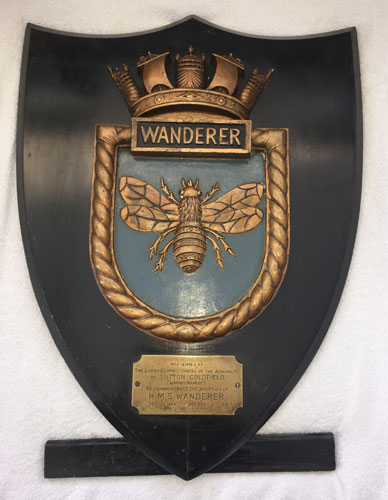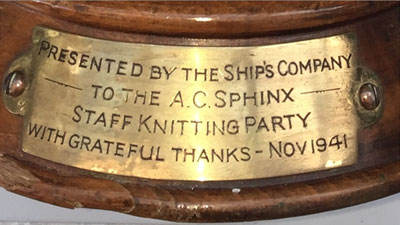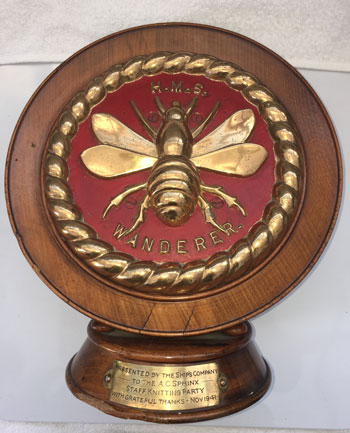
 HMS WANDERER
HMS WANDERER
Warship Weeks
Sutton Coldfield adopts HMS Wanderer
Warships Week 29 November - 6 December 1941


 Evening Despatch, Friday 17 October 1941
Evening Despatch, Friday 17 October 1941
 The
A. C. Sphinx Sparking Plug Company Ltd had moved from Birmingham to
Dunstable in 1934 and on the face of it would appear to have no
connection with either HMS Wanderer
or Sutton Coldfield but the donation of the splendid object on the
right to the "staff knitting party" proves that to be quite wrong and
suggests an obvious explanation for the relationship between a private
company and a wartime destroyer. It is self evident that the "staff
knitting party" were a group of female employees of the A. C. Sphinx
Company who combined their passion for knitting with a wish to support
the war effort by providing the crew of HMS Wanderer
with warm winter clothing for wearing in the Arctic cold they
experienced while escorting convoys and it is equally
obvious that the ship's company of Wanderer really appreciated their gifts of "comforts" and wanted to show this by donating a gift in return.
The
A. C. Sphinx Sparking Plug Company Ltd had moved from Birmingham to
Dunstable in 1934 and on the face of it would appear to have no
connection with either HMS Wanderer
or Sutton Coldfield but the donation of the splendid object on the
right to the "staff knitting party" proves that to be quite wrong and
suggests an obvious explanation for the relationship between a private
company and a wartime destroyer. It is self evident that the "staff
knitting party" were a group of female employees of the A. C. Sphinx
Company who combined their passion for knitting with a wish to support
the war effort by providing the crew of HMS Wanderer
with warm winter clothing for wearing in the Arctic cold they
experienced while escorting convoys and it is equally
obvious that the ship's company of Wanderer really appreciated their gifts of "comforts" and wanted to show this by donating a gift in return.